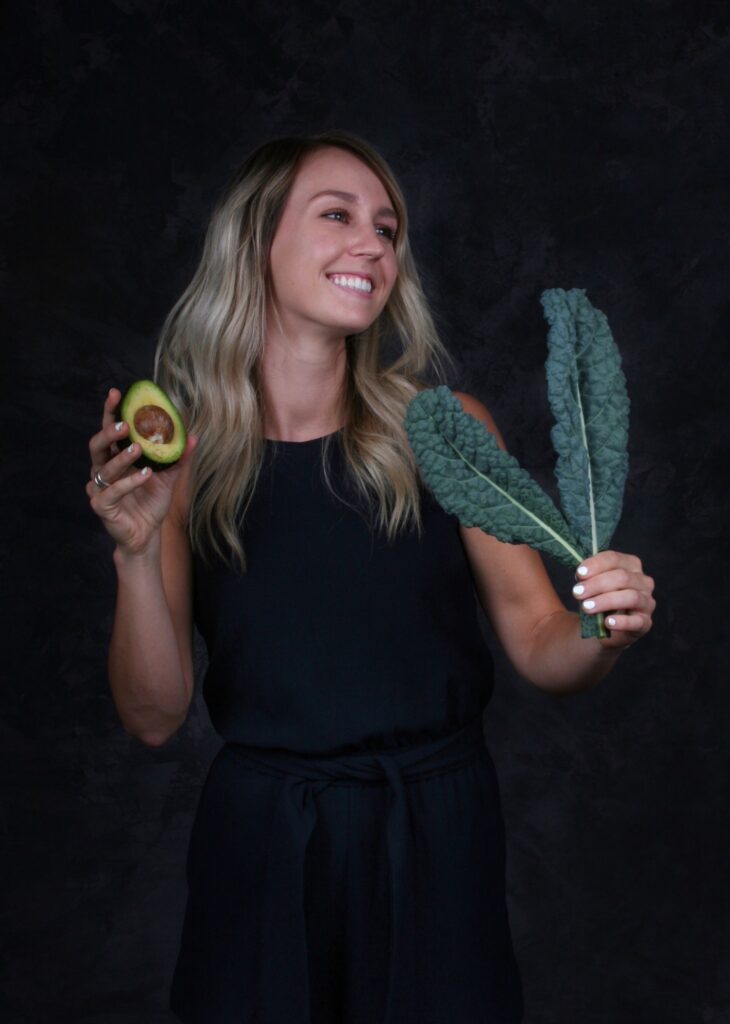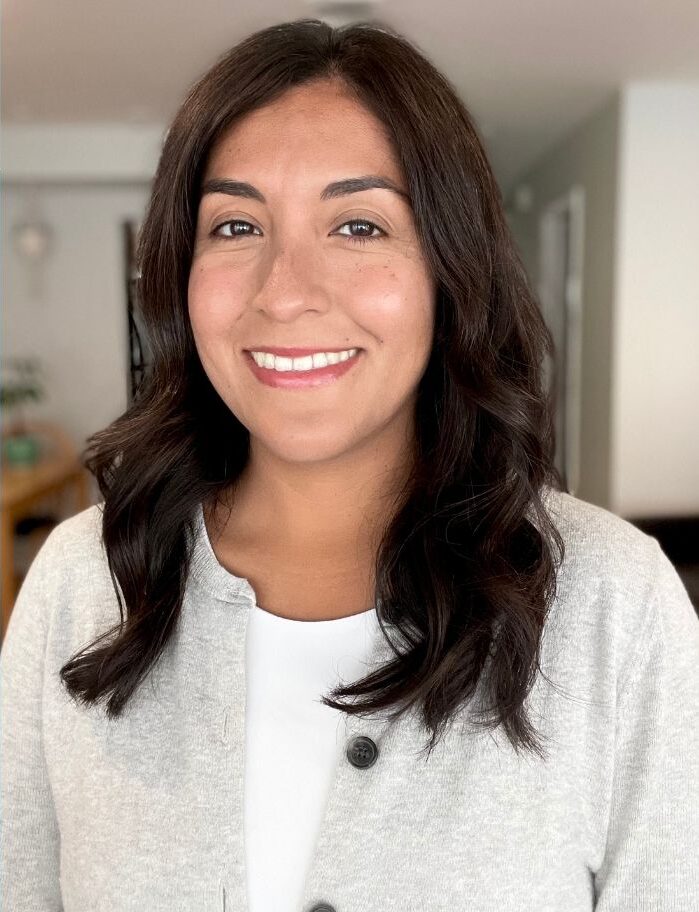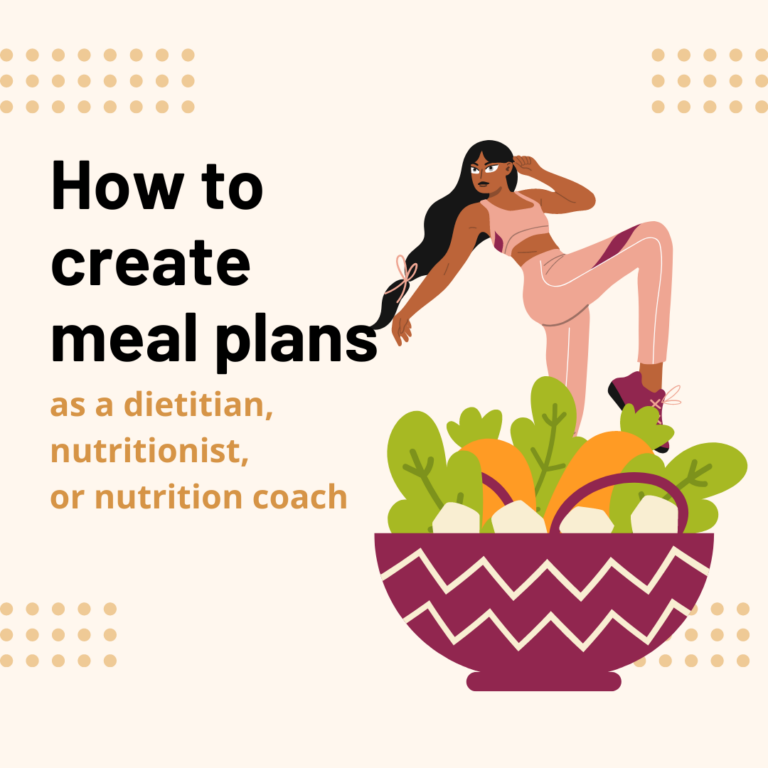- Meal plan rules
- How to create meal plans for clients
- Create a meal plan manually
- Use a meal plan template
- Automatic meal plan generator
- Create portion-based meal plans
- Customize foods and recipes
Author: Eva De Angelis – Dietitian Nutritionist
Who hasn’t had a few days, weeks, or even months filled with thousands of tasks?
Waking up and finding ourselves already behind in our work, activities, children, and so on?
Does this sound familiar?
Whether you’re a dietitian, nutritionist or nutrition coach, we’ve all been there; it’s a part of modern life.
With everything going on in our lives, who has time to think about what to eat – or cook – every day, right?
And most people enjoy sitting down to eat a home-cooked meal; it’s a time for comfort.
This is why a meal planning software is a valuable tool for everyone and it will make your patients’ lives easier.
It’s tried-and-true, meal plans help people live healthier lives.
Melissa Mitri, MS, RD of Melissa Mitri Nutrition
“Meal planning can be helpful for many reasons – it ensures you have healthy meals on hand, it saves you time and money, and helps you meet your health goals.
If you’re finding yourself scrambling at the end of the day to figure out your dinner, meal planning will provide structure and alleviate the stress of having to figure everything out last minute.
If you’re new to meal planning, start small, such as planning meals out 1-2 days in advance.
As you get more into a routine, you can modify your meal plan to have it fit your lifestyle – whether you want to prep each day for the next day, plan 2-3 days ahead, or a week ahead.”

Meal plan “rules”
As dietitians, we know that creating customized meal plans is tricky.
To begin with, each patient will have specific goals. Some people want a weight loss meal plan, while others want to gain muscle.
There’s also the issue of common nutrition-related diseases to consider. Diabetes and cardiovascular disease are unfortunately quite common these days.
Another key aspect is food allergies or dietary restrictions. This might be by choice or due to a health condition, but they’re an added variable to meal planning.
Besides, we must consider each patient’s unique needs, preferences, resources, and so on.
And how about calorie needs? They are different for everyone.
But is not only about whether they’re male or female, or how old are they. It’s also about their physical activity levels. An athlete is not going to have the same calorie needs as a sedentary person.
And on top of considering the macronutrient ratio, we have to dig deeper. Micronutrient requirements, that’s different for every life stage, are another key aspect.
For example, children and older adults don’t have the same needs.

Haley Bishoff, RDN, LD, Vegan Registered Dietitian
“The more prepared you are throughout the week, the more likely you are to eat healthy.
Don’t overcomplicate meal planning! A simple way to ensure you are getting proper nutrition is by making sure your meals are balanced.
Include vegetables, high fiber starches, lean proteins and small portions of healthy fats at each meal.”
How to create meal plans for clients as a dietitian, nutritionist, fitness trainer or nutrition coach
Making a meal plan “by hand”, something that you used to do while studying, is less than pleasant.
Many apps, such as NutritioApp, can help with this. They make it easier for us to create meal plans tailored to each patient.
NutritioApp has four fantastic ways to create meal plans through the software. And new features and improvements are constant.
Balancing Nutrition and Exercise for Better Results
A key to achieving optimal progress is ensuring that meal planning and physical activity complement each other. For example, a personal fitness trainer in Vancouver would take both into account when working with clients. They would align meal plans with exercise routines, ensuring that clients are fuelling their bodies properly for workouts and recovery. This approach not only supports muscle growth and energy levels but also maximizes the benefits of both nutrition and exercise. When these elements work together, clients are more likely to see lasting, effective results.
Christine Milmine, RDN from Plant Powered You
Not only does it feel good to have a plan in place, but meal planning might also save time in the kitchen and the grocery store!
When you know what you are going to make, you can examine what you already have on hand, and add what is needed to your grocery list.
While meal plans can save time, it’s also important to note that they should be flexible.
For example, if you have some produce that wasn’t on your plan for that day (but needs to be used up), consider making adjustments to your meal plan.

Create a diet plan manually
The platform offers a wide database of more than 100.000 foods and recipes to choose from.
You just choose the number of days and then start adding the foods for every meal. Then, the platform calculates the nutritional profile: calories, macronutrient distribution, and micronutrient intake.
You also get to decide which meals to add. So, for example, if your patient doesn’t eat breakfast, you can remove the meal from the meal plan and be done.
For every meal, you can search within the database and pick the ones that fit your client’s needs.
An interesting feature of the platform is the array of nutrition sources you can choose from.
We know that is not only about recipes or foods. Each country’s cultural foods, habits, and recipes are also important.
The nutrition facts on foods and recipes are sourced from various countries databases.
You can choose from the United States Department of Agriculture (USDA), the Australian Food Nutrient Database (AUSNUT), or the UK food composition database, among many others.
This allows you to work with patients from all over the world much more easily.

Amanda Lane, MS, RD, CDCES. Founder Healthful Lane Nutrition, LLC
“Meal planning is a great way to ensure your nutrient needs are being met and avoid extra trips to the grocery store. If you’re new to meal planning, start by planning one meal per day for the week, like lunch, and work up from there.”
Use a meal plan template
Depending on the macronutrient ratio, or the type of diet, you have options. Either high-protein, keto, vegan, vegetarian, and so on.
Plus, you can create your templates.
In all cases, you can customize the plan. For example, if the suggested food is not appealing to your patient, you can switch to a different one.
You can add more foods if necessary. And of course, change the amounts, according to your patient’s requirements.
You can also change the measurement unit, which is very useful when working with patients from different countries.
“Meal planning is a great routine to adopt to help you consistently make healthier food choices and stop wasting time thinking about what to eat.”

Automatic meal plan generator
In the new version, which will be ready very soon, you will be able to define the macro ratio and the energy intake.
Additionally, for every meal, you will be able to choose the rules for every dish – set the food group or food tags you would like to be used for that dish.
This way, the meal plan creation will be much simpler.
For example, if we’re setting up breakfast, we can set dish 1 to suggest foods from the cereal group, dish 2 to choose from the milk group, dish 3 from the fruits group, and so on.
Or, for lunch and dinner, you can set the dish 1 to have high-protein foods, dish 2 to use the #salads tag from the recipes and so on.
The beauty of this is that you first create a meal plan outline. And then, based on that outline the app automatically generates your meal plan.
If a particular food or recipe is not to your liking – or not to your patient’s liking – you can change it.
But the good thing doesn’t end there. Your patients can also swipe foods or recipes, always within their requirements.

“Meal planning is a great tactic to stay on track with healthful eating. Without it we can easily fall into the routine of grabbing whatever is in sight, making less favorable choices.”
Create portion-based meal plans
This is a very flexible, and easy, way of doing it.
The program has already predefined portions for each food group. But each dietitian can customize these portions.
You can edit the name, the quantity, the unit of measure, and even the photo that your patient will see.
Also, you can add more foods to a group, according to your patients’ likes and requirements.
For example, 1 portion of milk can be a cup of cow’s milk, yogurt, or plant based milk.
When you send the plan, your patient will see a list of choices for each portion. and within this list, how much of each individual food he or she can have.
This way, they can switch between alternatives, and don’t get bored.
With every meal plan option, you can choose to view, day by day, the nutritional detail of each meal plan.
The macronutrient distribution graphs, as well as the types of fats and carbohydrates.
It shows the calorie and protein intake for each meal. And also the micronutrient intakes.
Kathryn Piper RDN LD NBC-HWC, The Age-Defying Dietitian
“Most things in life require some preparation and planning. Food is no exception! Meal Planning is a great place to start improving your eating habits.
In addition, planning can cut down on food waste and save you money. A bit of preparation can also lessen the daily stress of figuring out what to eat.
Meal Planning is essential for weight loss too!”
Bri Bell, RD about simple meal planning
“Keep your meal plan simple, especially when you’re starting out.
You don’t need an elaborate system that takes hours to set up to get started!
You could start as simply as writing down a list of your favorite meals, then choosing a few for the coming week.
Then once you get a hang of it, you can add on to your meal plan system, or keep it simple if it’s working for you.”
Lisa Andrews, MEd, RD, LD. Owner
Don’t forget to use frozen and canned food to make meal planning easier. Canned beans and frozen veggies such as spinach or peppers and onions are great for soups, stews, and chilis.
Kathryn Bonilla Strickland, RDN, Plant Centered Dietitian
Meal planning is a great way to eat healthy. Focus on 3 main basics: protein, grains, and vegetables. Such as beans, brown rice and spinach.
Customize foods and recipes
Besides all the options to create meal plans, the platform allows you to add and edit recipes and foods.
There are more than 100,000 foods and recipes to choose from.
You can edit the name and photo of each food.
You can include tags such as gluten-free, or keto for every food or recipe, to make your meal planning easier.
Plus, you can create your own recipes, and the program will provide the nutritional composition and the food label.
Using the right tool you can create meal plans easily and quickly no matter if you are a dietitian, nutritionist, or nutrition coach.
Since you are here you might want to check a nutrition software for dietitians, nutritionists, fitness trainers and nutrition coaches that will help you grow and scale your nutrition business.
It is an all in one platform that has: automated meal planning software for dietitians, nutritionists, nutrition coaches and fitness trainers , nutrition analysis and diet analysis software, nutrition coaching software, nutrition practice management software and it even has marketing tools for dietitians, nutritionists, nutrition coaches and trainers.
